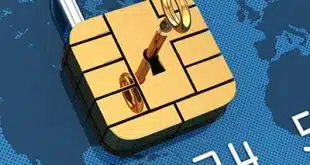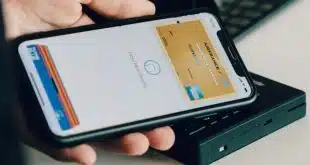After about two years of lackluster growth, e-checks at the point of sale started popping in the second quarter, according to new statistics from NACHA?The Electronic Payments Association. Sources tell Digital Transactions News that the force behind POP's sudden popularity is none other than Wal-Mart Stores Inc., the world's largest retailer. NACHA reports that POP, its standard entry class code for point-of-purchase electronic-check conversion, grew 43.4% in the second quarter to 60.1 million transactions from 41.9 million in 2005's second quarter. In the first quarter, POP recorded 42.4 million transactions, up only 10% from the year-earlier period when overall automated clearing house volume was growing 17%. Under POP, the store clerk scans a customer's check to extract bank routing and account information from the magnetic ink character recognition (MICR) line and then hands it back to the customer, voided. The customer must give explicit permission for the transaction, which results in an ACH debit to the consumer's demand-deposit account. While POP transactions reduce merchants' acceptance costs, POP uptake has been relatively slow among merchants because of the perceived need to equip every lane with a scanner and rules requiring the customer's okay. Ironically, news of the unexpected surge in POP transactions comes just six months before a new NACHA e-check application for the point of sale, called back-office conversion (BOC), goes live (Digital Transactions News, Aug. 31). BOC in some respects is a response to what has been merchants' tepid reaction to POP. Wal-Mart, which had some checkout lanes equipped for POP transactions already, reportedly in the second quarter brought many more lanes online. Reached by Digital Transactions News, a Wal-Mart spokesperson confirmed the huge retailer had expanded its use of POP, but refused to give further details. He did say Wal-Mart currently has no plans to implement BOC. NACHA, the Herndon, Va.-based organization that governs the ACH, would not comment. Bentonville, Ark.-based Wal-Mart operates about 3,800 facilities in the United States, including discount stores, combined discount/grocery Supercenters, smaller Neighborhood Markets and Sam's Club warehouse stores. Famous for keeping operating costs as low as possible, Wal-Mart is a fan of PIN debit, the least expensive of card payments, and was the leader of the class-action lawsuit against Visa and MasterCard over signature-debit acceptance costs that resulted in a $3 billion settlement by the card associations in 2003. While POP enjoyed a rare moment in the sun, other NACHA e-check codes also posted strong growth in the second quarter. The WEB code for Internet bill payments grew 34.9% to 318.5 million transactions over 236 million items in the year-earlier period, though volume fell 1.4% from 322.9 million transactions in the first quarter. ARC, for accounts receivable conversion, the e-check code many firms use for mailed bill payments, grew 28.9% to 494.6 million transactions from 383.6 million transactions in 2005's second quarter. TEL, for telephone-originated payments, posted 71.4 million transactions, up 24.7% from 57.2 million in the year-earlier period. ARC and TEL volume was practically unchanged from the first quarter, however. Overall NACHA volume grew 14.4% to 3.01 billion transactions from 2.63 billion in the 2005 period, but was up only 0.96% from the first quarter. The figures include commercial interbank and government transactions, but not on-us transactions. A rules revision that takes place Friday might give a modest boost to volumes by making the ban against submitting business checks for electronic conversion easier to comply with, a NACHA spokesperson says. Instead of relying on originators not to submit business checks into the ACH system, which sometimes happens either purposely or inadvertently, the revised rules will ban checks with auxiliary on-us fields from being submitted. These fields, which provide corporate treasurers with additional tracking data, require larger stock than the standard, 6-inch consumer check and hence will be easy to identify as business checks (Digital Transactions News, Nov. 3, 2005). The effect, according to the NACHA spokesperson, could be to cause companies that have held back on e-check conversions to go ahead because they'll no longer have to worry about inadvertently submitting business checks that subsequently result in costly returns or disputes. “We know that we have business checks that are being converted,” the spokesperson says. “That is against our [current] rules, but our rules are not easy to comply with.” The new rules also ban checks written for more than $25,000, nearly all of which are business checks.
Check Also
Wirex Travel Debuts and other Digital Transactions News briefs from 3/27/25
The payments platform Wirex Ltd. has launched Wirex Travel, a travel-booking utility offering discounts and cashback to …



